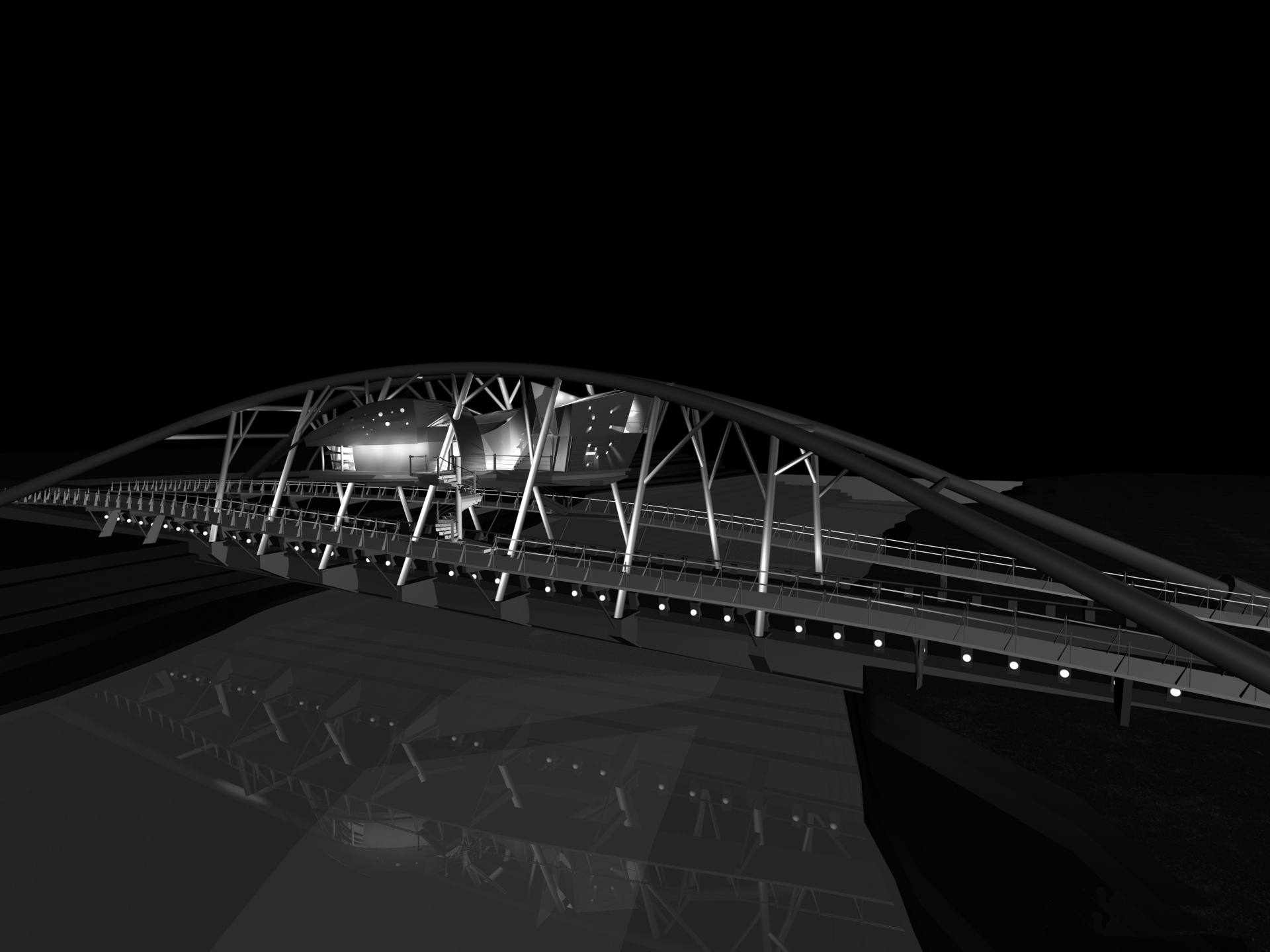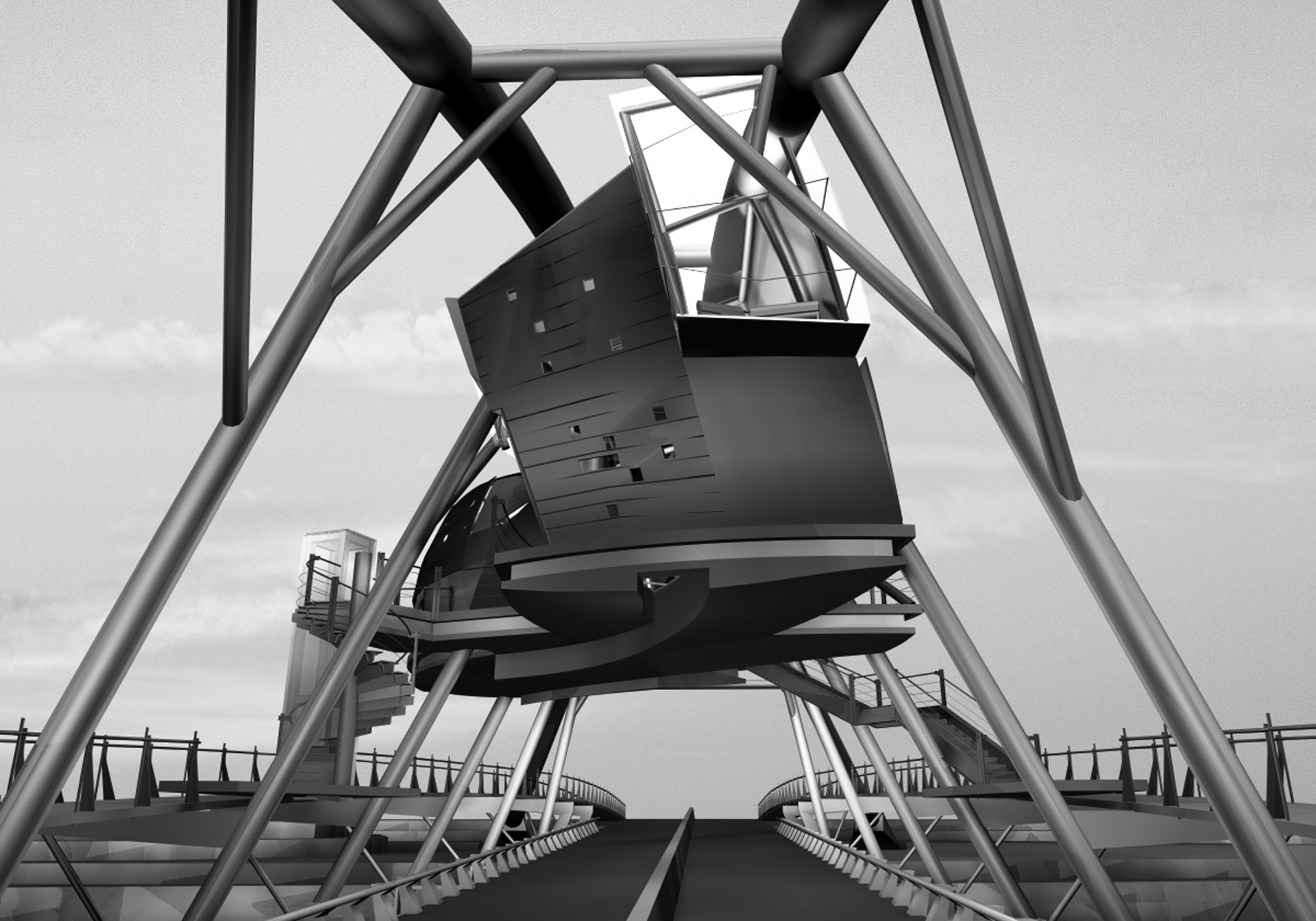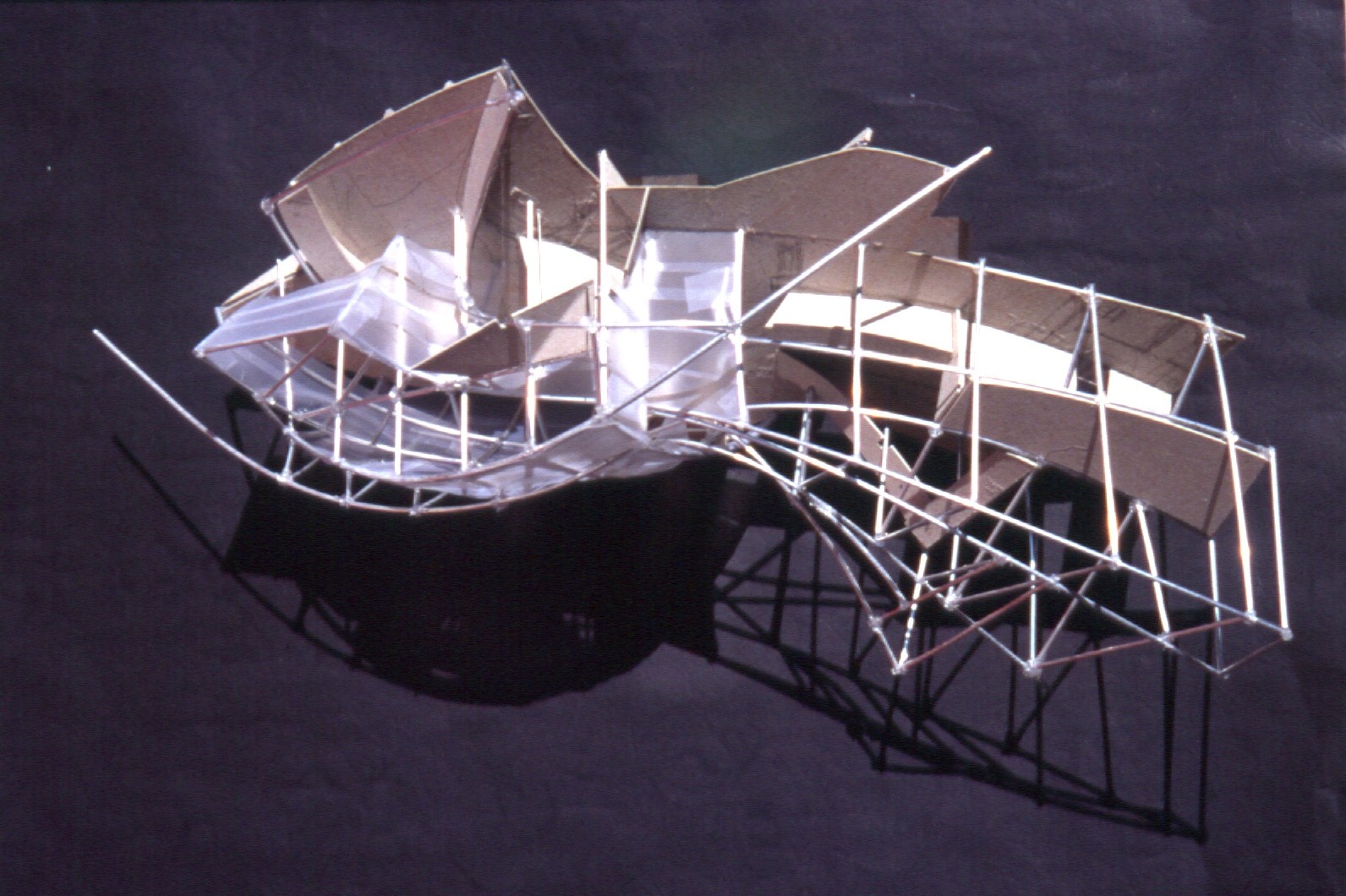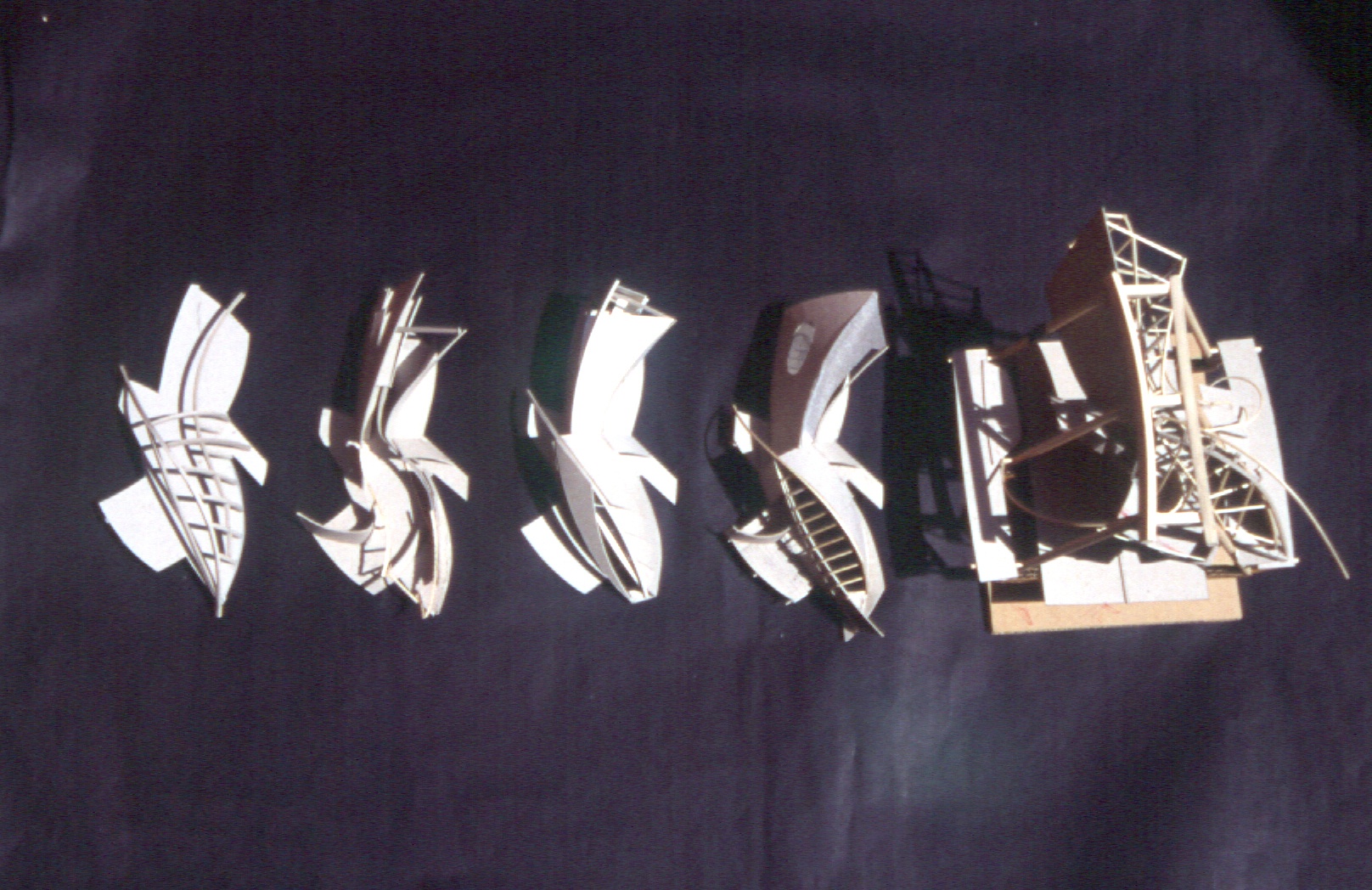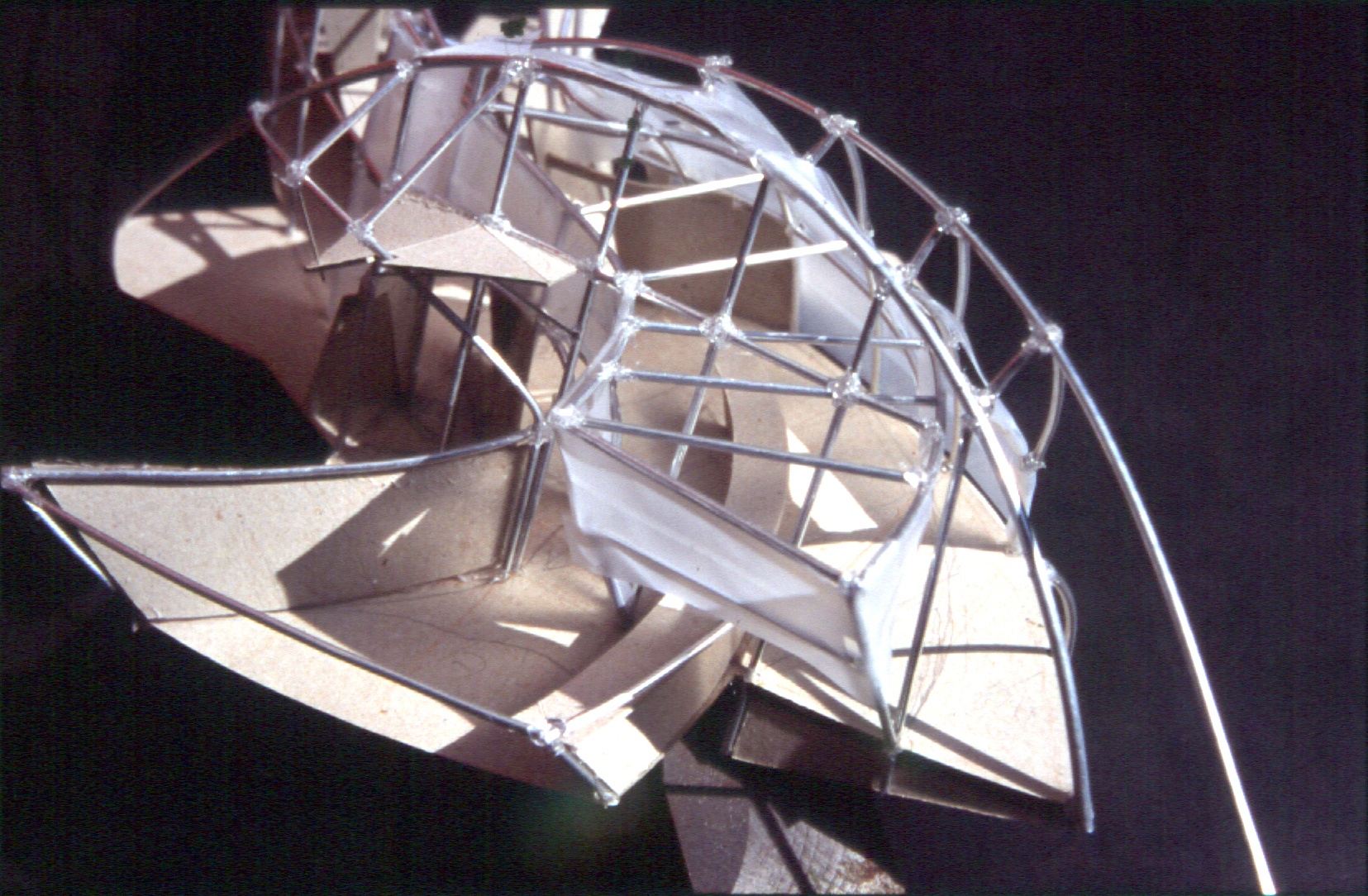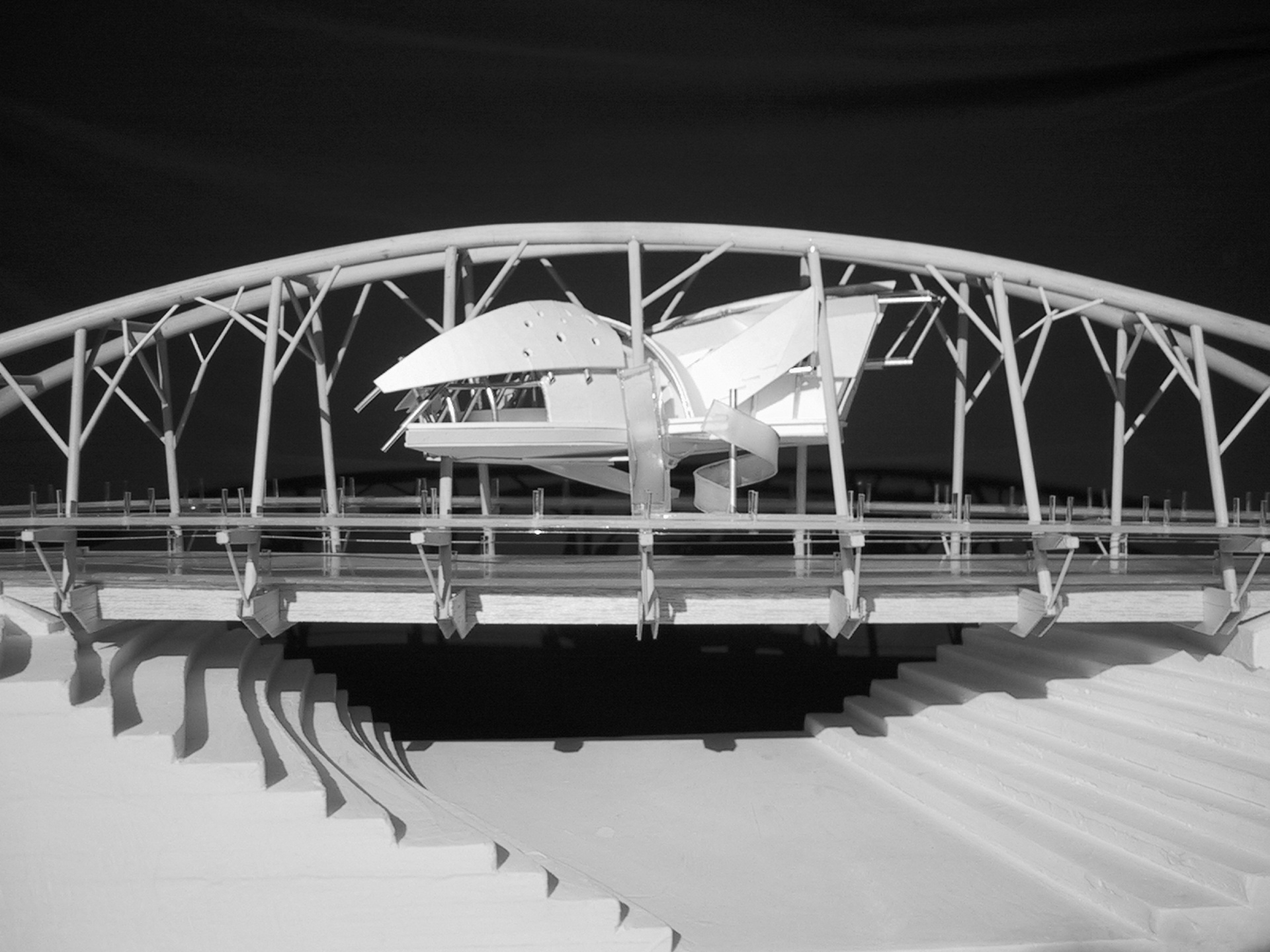
Hsinchu Jiaotong University Landscape Bridge
Surrounding the site, I can see, smell, touch, and feel:
- The undulating mountains in the vicinity, with their continuous contours, creating an intriguing overlapping of volumes.
- The horizontal tension of the earth, stretching infinitely without a beginning or end.
- The "posture" of the wind as it travels through the air, appearing like countless lines, weaving numerous spaces in an embroidery-like manner.
- During the day, the ever-changing shadows cast by the path and the main building due to the movement of the sun through the seasons. Conversely, at night, the main building becomes an artificially illuminated object, creating a different atmosphere with the surrounding darkness.
- The blurred silhouettes of passing cars due to the visual afterimage, creating a collage of overlapping shapes.
These observations serve as intuitive responses and form the basic coordinates for the design reference. With a dedicated perception, the design aims to transcend the "limitations" imposed by theoretical assumptions and post-construction evaluations.
The bridge structure becomes the only anchor point for the café, floating and uncertain. The pursuit of dynamic balance becomes a desire and imagination in my heart. From imagination to realization, it is a long and arduous journey. It brings to mind Edgar Degas' painting "Star" (1867-77), an Impressionist artist, depicting a female dancer balancing on one foot, capturing a sense of emptiness, poised and ready to move, full of dynamism and tension.
The design process begins with sketching to initially present the imagined concepts, followed by the use of cardboard models with its three-dimensional ease to start constructing spaces and considering their relationship with the bridge structure. Construction and destruction, back and forth, over ten study models, until gradually finding a direction. The main structure is positioned first, and then gradually refined. Next, using traditional drawing methods, plans, elevations, and sections are drawn, and a paper model with double scale is constructed. Measurements are taken, data is input into the computer, both inside out and outside in. Architecture relies on dedication and passion.
The structure of the bridge and the café must adhere to rationality. The café's exterior wall base is made of hot-dip galvanized iron plates, fully utilizing the material's properties of expansion, bending, twisting, tearing, perforation, and folding. Coupled with the natural factors of wind direction, sunlight, orientation, outdoor scenery, and vehicle speed, the design attempts to create a living, dynamic architectural machine that engages in a dialogue with people, nature, and the earth.
- The undulating mountains in the vicinity, with their continuous contours, creating an intriguing overlapping of volumes.
- The horizontal tension of the earth, stretching infinitely without a beginning or end.
- The "posture" of the wind as it travels through the air, appearing like countless lines, weaving numerous spaces in an embroidery-like manner.
- During the day, the ever-changing shadows cast by the path and the main building due to the movement of the sun through the seasons. Conversely, at night, the main building becomes an artificially illuminated object, creating a different atmosphere with the surrounding darkness.
- The blurred silhouettes of passing cars due to the visual afterimage, creating a collage of overlapping shapes.
These observations serve as intuitive responses and form the basic coordinates for the design reference. With a dedicated perception, the design aims to transcend the "limitations" imposed by theoretical assumptions and post-construction evaluations.
The bridge structure becomes the only anchor point for the café, floating and uncertain. The pursuit of dynamic balance becomes a desire and imagination in my heart. From imagination to realization, it is a long and arduous journey. It brings to mind Edgar Degas' painting "Star" (1867-77), an Impressionist artist, depicting a female dancer balancing on one foot, capturing a sense of emptiness, poised and ready to move, full of dynamism and tension.
The design process begins with sketching to initially present the imagined concepts, followed by the use of cardboard models with its three-dimensional ease to start constructing spaces and considering their relationship with the bridge structure. Construction and destruction, back and forth, over ten study models, until gradually finding a direction. The main structure is positioned first, and then gradually refined. Next, using traditional drawing methods, plans, elevations, and sections are drawn, and a paper model with double scale is constructed. Measurements are taken, data is input into the computer, both inside out and outside in. Architecture relies on dedication and passion.
The structure of the bridge and the café must adhere to rationality. The café's exterior wall base is made of hot-dip galvanized iron plates, fully utilizing the material's properties of expansion, bending, twisting, tearing, perforation, and folding. Coupled with the natural factors of wind direction, sunlight, orientation, outdoor scenery, and vehicle speed, the design attempts to create a living, dynamic architectural machine that engages in a dialogue with people, nature, and the earth.
| Awards |
|
|---|---|
| Category | Competition |
| Location | Hsinchu |
| Completion | 2001 |
01 / 08
